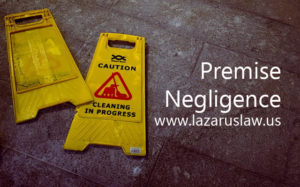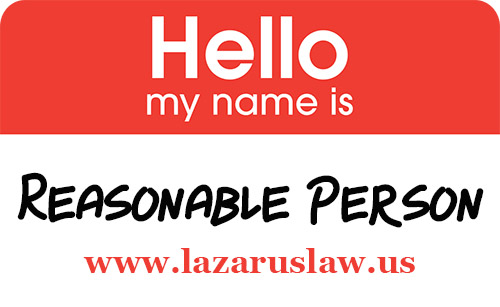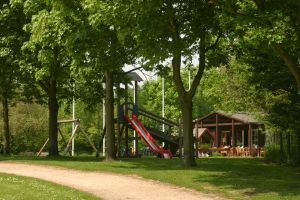Have you ever tried to reason with an unreasonable person? It’s frustrating! But you have to imagine that the other person thinks you’re the unreasonable one, so how do you come to a solution for your disagreement? The answer is, you usually don’t.
When a dispute gets to the point where you must use your constitutional right to sue in court, there are certain things that must be present in order to file a suit that stands a chance of being successful. The first is, did the person or people who caused you harm have a responsibility or “duty of care” to provide a safe environment and not hurt you? If you’re walking down the sidewalk and a brick from a building falls on your head you can’t sue the person who was sitting on a chair nearby drinking coffee. The building owner is probably the logical target for your lawsuit.
The second element that is essential is that the person you wish to sue did not exercise reasonable care or judgement, thus causing the incident to occur. There’s that word reasonable again.
The definition of reasonable is: a: being in accordance with reason, a reasonable theory. b: not extreme or excessive. c: moderate, fair.
 The third essential element is “proximate cause” which means that the party you want to sue likely caused or contributed to the incident occurring, either by something they did or something they did not do. Lastly, there must be damages. These damages may be physical, mental, psychological, financial, or some other kind. But proving damages is important and sometimes difficult.
The third essential element is “proximate cause” which means that the party you want to sue likely caused or contributed to the incident occurring, either by something they did or something they did not do. Lastly, there must be damages. These damages may be physical, mental, psychological, financial, or some other kind. But proving damages is important and sometimes difficult.
In law, especially in the area of negligence, the “reasonable person” doctrine has been used for many years to define what society will or won’t condone as acceptable behavior so that harm is not done to others. For example, if your business involves the installation of underground pipes, you wouldn’t dig a deep hole and leave it open overnight with no caution signs or barriers to warn people. If you did that then you failed to act on your duty to protect the public. On the other hand, if you were diligent about blocking the hole and used lighted signs and took every reasonable precaution possible, but a person willfully ignored the safety measures, climbed over a barrier, and he fell in and was hurt, the court would likely see that the victim was not using reasonable judgement.
When a property owner does not take reasonable steps to make sure there are no hazardous conditions, it is often referred to as “premise negligence” and if someone is hurt there may be grounds for a lawsuit. Florida uses the reasonable person concept when dealing with personal injury cases and other lawsuits involving physical, financial, or property damages. It’s important to understand that something you find to be perfectly reasonable may not be seen that way in court, and that’s why some people emerge victorious from the courthouse and some don’t. Try to wrap your ahead around the fact that no system is perfect, but ours is pretty good.
What happens if both parties in a lawsuit are unreasonable? Florida also uses a principle known as “comparative negligence” which is a way to assign blame based on the level of negligence by each party. We’ll get into that in our next blog post. Until then, be reasonable!
If you think you might have a reason to sue someone who caused you some type of damages or physical harm, we’re here to help you understand your rights under the law. Call us at (954) 356-0006 and we’ll be happy to listen to your story and talk about the best course of action.







Recent Comments